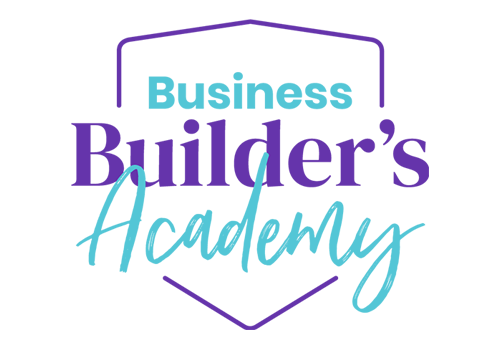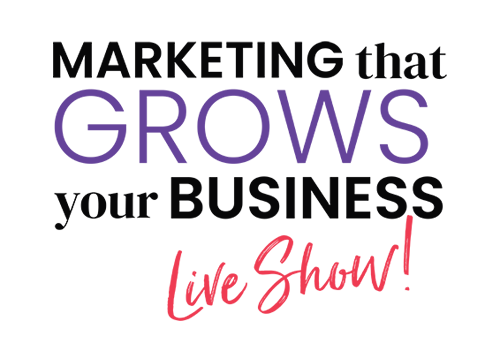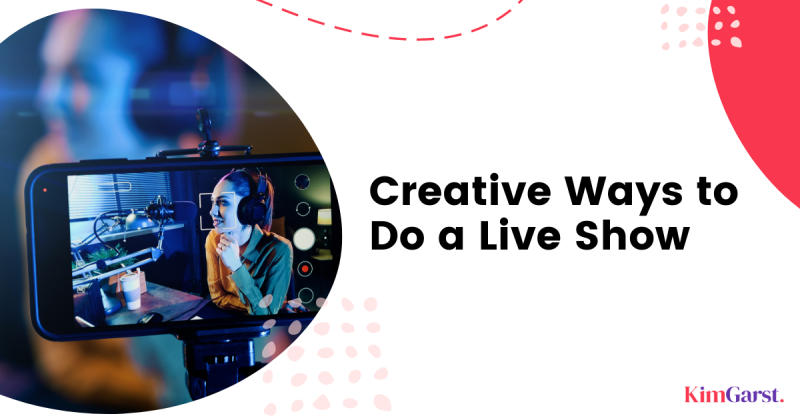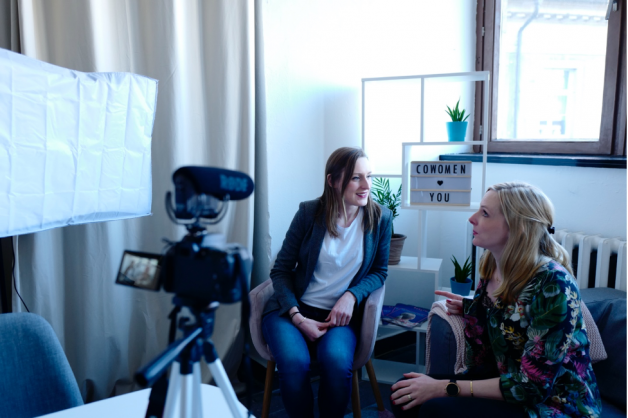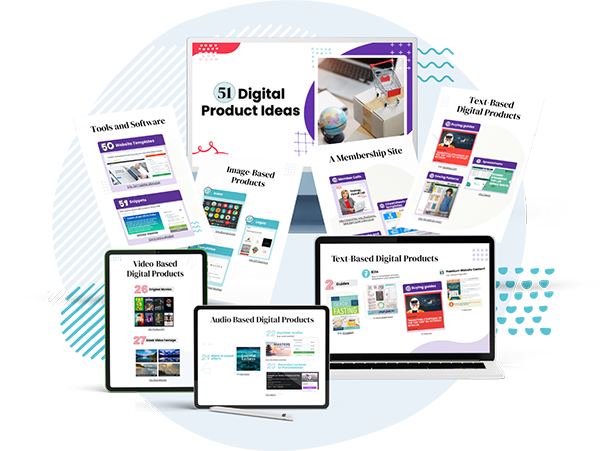Are you thinking about starting a live show for your business?
Wondering how it can help your bottom line? (Because you’re not just doing it for fun!).
I recently sat down with Lou Mongello, speaker, author, and host of the award-winning WDW Radio Disney podcast, to talk about some exciting, creative ways to do a live show.
Lou left his career as an attorney to pursue his passion for Disney, and now teaches others how to “turn what they love into what they do”.
Lou started live broadcasting in 2007, back when UStream was big. When he saw that the technology was so readily accessible, he immediately jumped on it.
He used both Periscope and Meerkat in the early days, but has now really landed on Facebook.
He liked the idea of fostering community with his live show, so having a Facebook page and group where he could go live was very important.
I was excited to talk to Lou about some creative ways he uses Lives, and how we can create community with our own viewers. We also discussed:
- The best way to start your Lives
- How to let people call in to your live show
- The optimal length of your live show
- Whether it’s best to have a script or be spontaneous…
And much more.
But before we jump in, it’s important to clarify what we mean when we refer to a live show…as opposed to just “going live”.
What is a Live Show?
A live show is a broadcast that’s held consistently at the same time, in the same place. “Going live”, on the other hand, is doing random live broadcasts (for instance, when there’s breaking news, or simply because you want to go live!).
Check out my LIVE Show: Marketing That Grows Your Business HERE.
Lou has a live show that happens every single Wednesday at 7:30 pm EST. He’s been doing the show at this time for 13 years, and has been religious to that schedule since day one. However, he also regularly goes live at other times.
His live show – even though it’s scheduled for the same time each week – isn’t scripted, and isn’t even planned out more than 10 minutes before the show goes live. He has a structure in mind, but finds the conversations will quite often drive the content.
He’ll typically do a weekly “Top 5” Live where he’ll extract some of the points from his podcast, which is a Top 10. This really helps to spark conversation from the people who are there.
He’ll ask people whether they agree or disagree, ask them to share their thoughts, and usually do an interactive contest as well. Again, he likes to let the conversation drive the content.
Something that’s really cool about Lou’s show is that, before COVID, he would often go live on site: for instance, at Disney, at a restaurant, or at an event.
For Lou, this is all about getting to share that experience with his viewers: to have them feel as if they’re with him at a live review of a restaurant, or walking through the magic kingdom together, or even just sitting down having a conversation together.
The Ideal Way to Start Your Lives
This is something many people struggle with. I’ll often see people say, “We’ll just wait until everyone gets here”; but to me, that’s saying the people who are already there aren’t valuable somehow.
For this reason, I recommend jumping into your content right out of the gate.
Lou feels the same way, and urges people to remember that they’re not just talking to the people who are there live, but to those who are watching the replay as well.
One thing he does to get things going right away is to use a countdown timer. Before he’s even on the screen, there’s a title card with a timer that gives people a few minutes to get comfortable, or even start chatting among themselves.
But as soon as that timer is done, he’s live, and he jumps right in.
And if there’s just one person watching? Lou believe it’s key to speak to that one person, to welcome them, thank them, and to talk to them as a friend. It’s that authenticity, transparency, and unpredictability of the live that Lou loves…and that viewers do as well.
How to Let People Call in to Your Lives
One unique thing about Lou’s live show is that he lets people call in if they have questions. When he was a kid, he remembers being able to call in when listening to the radio, and you’d get to hear your own voice. People still enjoy that and appreciate those one-on-one conversations.
According to Lou, there are many ways to facilitate live calls. For instance, Ecamm has the capacity to bring Skype directly into your Lives. However, here’s how Lou does it: He uses a second laptop and a Skype-In number, and runs that through his mixer. People can then call in and he can mention their comments in the Live.
(By the way, I asked Lou what kind of mixer he uses, and it’s a simple 4-channel mixer that costs less than a hundred bucks. So don’t let the price hold you back if that’s something you’d like!).
Another way to incorporate live calls is to simply have people call in on your phone. You can then run that through your mixer or onto your computer as well.
Lou believes adding these live calls to your show really takes thing up a notch: “It’s one thing to read a comment that’s being typed out, but it’s another thing to have somebody be there, [to] hear the passion in their voice, and to let them ask a question or make a comment…I think [this] adds such a wonderful dynamic to the live show”.
I definitely agree that this one-on-one engagement adds such a great dimension to live broadcasts. You can actually pull in a community member, and engage with them directly.
The Optimal Amount of Time to Go Live
This is a question I often get asked: How long should I go live for?
According to Lou, the answer isn’t clear cut: “[T]he show needs to be as long as it needs to be, and as long as you want it to be. My shows tend to run a little long…because again, they [the viewers] are driving the content”.
Here’s an example: Before COVID-19, Lou did monthly meetups at Disney World, where he was face to face with people. Obviously, he hasn’t been able to do that for a while, so he decided to start doing these meetups online. There are no topics or agendas at these meetups – people can just come in and gather in one place. And these Lives can last up to 2 or 3 hours!
However, it’s not because there’s something he wants to talk about: it’s because his people have stuff they want to talk about…and that’s the real beauty of it.
Now, no one’s saying YOU have to go live for 2 or 3 hours! Let your viewers and your own preferences guide how long you go live.
Should You Have a Theme and Script, or Be Spontaneous?
This is another question I get asked a lot. Is it best to have a theme and script for each episode of your show, or to just jump on and do an “ask me anything” type Live?
Lou does a combination of the two. If there’s relevant Disney news – like opening a new cruise ship, attraction or restaurant – he’ll talk about that. He finds it to be a great way to have a conversation because everyone can relate to it.
As mentioned earlier, Lou doesn’t use a script…but he does have a list of bullet points, or even just simple questions. This really helps kickstart the conversation, and sometimes that’s all you need.
Something else he does to spark conversation is to simply start his show by sharing a question someone asked on the blog or Facebook during the week. This starts that ripple effect and conversation tends to come from that.
One of the things that scares some people about doing a live show is the unpredictability of it. As a recovering perfectionist myself, this was a very hard thing for me in the beginning!
In the early days of Periscope, I actually had a light fall on my head, literally in the middle of my livestream. But you know what? The world didn’t end, and I didn’t die. In fact, people loved it!
They don’t expect perfection.
According to Lou, the unpredictability and spontaneity of live video is actually what attracts people to it: “The unknown can happen if you’re recording a podcast or video, [but] you would edit that out…and I think viewers are watching because [they] don’t know what’s going to happen next. And I think that’s the authenticity and the transparency and the beauty of it”.
Best Equipment for Doing a Live Show
One thing that often holds people back from starting a live show is the assumption that you need a ton of expensive equipment. However, Lou strongly believes people aren’t tuning in to your live show for all the bells and whistles. Rather, they’re tuning in for the content and the conversation.
I 100% agree with this! It’s all about the real connection with your community. That said, we do still rely on technology to help us go live, and to help make things a little easier.
When Lou is live on location, he literally just uses his phone – no fancy-dancy equipment, no tripod. He wants people to feel like they’re really there with him, on location. He doesn’t even usually bring an external mic, because he wants people to hear the ambient noise.
Lou suggests even just having a pocket tripod, so you can put your phone down, or hold it like a makeshift gimbal to keep the movement to a minimum. And even if you do want to get a gimbal, you’re only looking at $99 – so don’t let that be an obstacle you feel you need to overcome.
When it comes down to it, Lou advocates for keeping things basic and simple: “Take your phone…and your $1.99 pop socket, and hold it like that. And that’s good enough”.
How to Monetize a Live Show
There are many different ways to earn money through a live show, so I was curious how Lou is monetizing his.
He made it clear that he didn’t start his live show in order to make money from it. Rather, he focused on his “why”: his reason for doing the show. He recommends others start at this place as well: “Be very intentional from a grand perspective in terms of why you’re doing a live show, and then why you’re doing each individual episode. As a viewer, what is that person going to get as a result of investing their time, which is the most valuable commodity?”.
Over time, Lou did begin monetizing his show. He has sponsorships (one company has sponsored the podcast for almost 13 years), and he also uses Patreon, which has gone very well for him.
(By the way, for others who are thinking about using Patreon, he strongly recommends building your Patreon only AFTER you’ve established a community around your show).
Lou admits he feels very awkward about promoting or advertising. He does use title cards to let people know about upcoming offers – like a group cruise or a workshop. He uses these to get their attention to let them know about things he’s offering, but not in a way where he’s doing “commercial breaks”.
For instance, if he was sponsored by a restaurant at Disney, he’d much rather go live from that restaurant, and let people see what it’s like. In his view, this is the most powerful kind of brand and relationship marketing.
I love this approach: I believe it’s best to serve, and then let the sales happen as a by-product of that. As Lou has done, build a connection, and don’t go into it with the sole intention of asking for money.
I love this approach: I believe it’s best to serve, and then let the sales happen as a by-product of that.Click To TweetThe Best Day and Time to Do a Live Show?
Obviously, the answer to this will vary depending on your niche and audience. However, Lou recommends choosing a weekday if possible; “Weekends are sometimes tough, because we’re scattered. We’re going off in different directions. Whereas the week is usually when we have a little more structure”.
Some people do very well holding their show in the middle of the day. It’s sort of like a lunchtime break that people look forward to. Alternatively, you can do it later in the day, when people are home from work or school.
Really, it’s about testing it out and adjusting it to suit your community.
Lou also recommends asking your community members what they might like. But rather than just asking in general and getting 50 different days and times, suggest 3 options and see which ones work best.
I definitely recommend keeping to a consistent day, time, and location. If you do this, you don’t necessarily need to create a post telling people you’re going live, because they’ll know you’re always on at that time and location.
Go Solo or Have a Partner on Your Show?
There are many different models you could follow for your show: for instance, you could have a host, a producer, and a guest, and do more of an interview model. Alternatively, you could have a co-host, or just have yourself straight-up delivering value (like a “talking head” type deal).
In my opinion, each of these models is great, depending on what you actually want for your show. Lou agrees, and suggests you can even do all three. For instance, he does his Wednesday night show by himself, which helps facilitate conversations with his viewers. But then when he’s live on location somewhere, people might come up to him, and all of a sudden they’re part of the show.
It can be a very fluid and dynamic thing. The beauty is that there’s no one model you have to stick to. You can go live on your own, and talk to people who are there. Or if you have a hard time doing a monologue, maybe bring in a guest in-person or via Skype.
I do my live show every Monday at 10AM EST, and I’ll go live periodically at other times too – where I’m sharing value of some sort, and just connecting with my community.
But as Lou said, you’re not locked in to anything. You can do a combination of formats. It’s whatever works for YOU!
What’s the Best Platform for Getting Engagement?
For Lou, getting engagement on Facebook is an uphill battle he’s continuing to fight. Because of the algorithm, it’s always a bit of a mystery what gets shown on Facebook, and to who.
He’s never done any type of paid advertising, because he wants people to come to the content on their own. And when you have a group of people who are passionate, loyal evangelists, what you really need to do is ask them to help spread the word.
Having people recommend your stuff because they enjoy it is the best kind of endorsement, according to Lou: “I think [this] is the best and most organic way to grow viewership: to grow listeners, readers, subscribers, whatever it is you’re looking for”.
Click To Tweet is the best and most organic way to grow viewership: to grow listeners, readers, subscribers, whatever it is you’re looking for”.” quote=”Having people recommend your stuff because they enjoy it is the best kind of endorsement, according to Lou: “I think [this] is the best and most organic way to grow viewership: to grow listeners, readers, subscribers, whatever it is you’re looking for”.” theme=”style6″]I completely agree with Lou on this point. I call it a “self-licking ice cream” because without engagement, you can’t get more viewers; that’s just the way the algorithm works. And without more engagement, you can’t get more reach. It’s definitely an uphill battle!
So…how do you mitigate that? There’s definitely an education process. You want to get those new people to share your stuff, and you also need to get them to turn on their notifications so they know when you go live. So, it’s not going to be an overnight success.
It’s important to recognize that most of the time, people don’t start a show and immediately have success. It takes time, energy, and consistency, even when it feels like it’s not working for you. You really do have to keep at it. Encourage people, and keep focusing on your community – that is just so important.
Lou recommends reminding people about your show, whether that’s through a tweet, through creating a Facebook event, or through sending out an email on the day of: “We’re so distracted. We need those constant reminders about what’s going on and when it is. So don’t feel like you’re being annoying”.
Final Thoughts
As you can see, there’s no one “right” way to do a live show! However, showing up consistently and building community are KEY – no matter what else you do.
A huge thanks to Lou for joining me on this Live, and don’t forget to check out his amazing podcast and live show at WDW Radio!
Do you have a live show? Or are you thinking of starting one? Let us know in the comments below!
About Author
Kim Garst
Kim Garst is a renowned marketing strategist and speaker who is trailblazing the use of artificial intelligence in digital marketing. With over 30 years of experience as an online entrepreneur, Kim helps entrepreneurs grow their business and authority online by using AI technology. She is leading the way with proven AI frameworks that help entrepreneurs build authority in their space.
She is keynote speaker and an international best-selling author of Will The Real You Please Stand Up, Show Up, Be Authentic and Prosper in Social Media.
Named by Forbes as a Top 10 Social Media Power Influencer, Kim is well-known for her skill to simplify complex technology and make the use of AI understandable for business growth. Her relatable, actionable advice helps guide new entrepreneurs to harness the power of AI to succeed in digital marketing. Kim is leading the way in combining human and technological skills to create a new model for AI-powered marketing.

